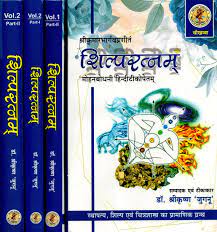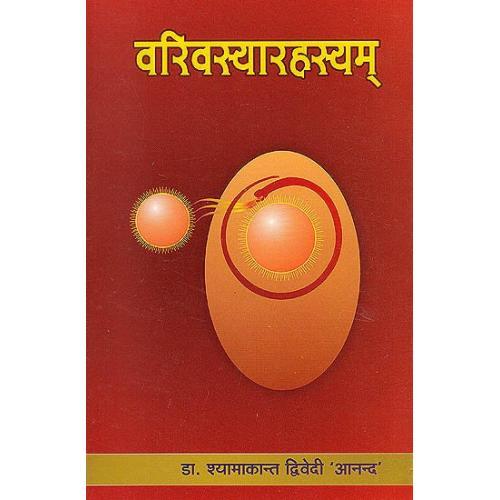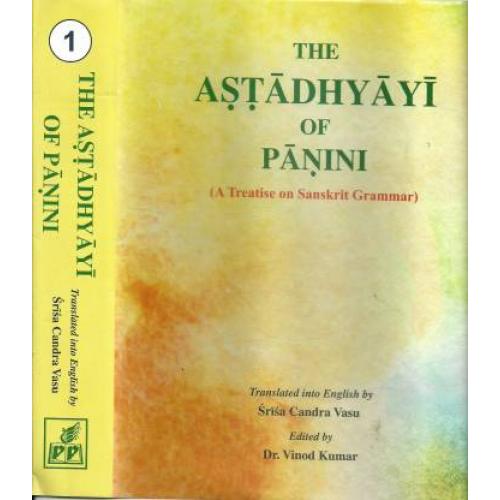Shilpa Ratnam of Kumar Bhargav शिल्परत्न (1-4 Parts)


Shilpa Ratnam of Kumar Bhargav शिल्परत्न (1-4 Parts)
(0 Reviews)
Product Code :CSG 645
Author : Shri Krishna Jugnu
ISBN : 9789389665246
Bound : Hard Cover
Publishing Date : 2020
Publisher : chaukhamba surbharati prakashan
Pages :
Language : Sanskrit text with Hindi commentary
Length: 23 cm
Width : 15 cm
Height : 9 cm
Weight : 2000 gm
Availability : 92
Price:
₹2,000.00
₹2,500.00/ 20 %
Refund:
Share:
शिल्परत्न (Shilpa Ratnam) श्री कृष्ण जुगनू द्वारा रचित एक महत्वपूर्ण ग्रंथ है, जो भारतीय शिल्पकला और वास्तु के क्षेत्र में एक अमूल्य योगदान प्रस्तुत करता है।
पुस्तक का विवरण:
- लेखक: श्री कृष्ण जुगनू
- भाषा: संस्कृत
- मुख्य विषय: शिल्पकला, वास्तु, और स्थापत्य
पुस्तक की विशेषताएँ:
- शिल्पकला: यह ग्रंथ भारतीय शिल्पकला की विभिन्न विधाओं, शास्त्रों और परंपराओं का विस्तृत वर्णन करता है। इसमें मूर्तिकला, चित्रकला, और स्थापत्य कला के विविध पहलुओं की जानकारी दी गई है।
- वास्तु और स्थापत्य: पुस्तक में वास्तु और स्थापत्य के सिद्धांतों और विधियों का गहन विश्लेषण किया गया है। इसमें भवन निर्माण, मंदिर निर्माण, और वास्तु शास्त्र के महत्वपूर्ण सिद्धांतों की चर्चा की गई है।
- Vastu shastra(Science of Architecture) is a traditional system of architecture originating in India.Texts from the Indian subcontinent describe principles of design, layout, measurements, ground preparation, space arrangement, and spatial geometry.Vastu Shastra are the textual part of Vastu Vidya - the broader knowledge about architecture and design theories from ancient India.Vastu Vidya knowledge is a collection of ideas and concepts, with or without the support of layout diagrams, that are not rigid. Rather, these ideas and concepts are models for the organisation of space and form within a building or collection of buildings, based on their functions in relation to each other, their usage and the overall fabric of the Vastu."Vastu is mainly based upon the eight directions and the five basic elements of nature. The Vastu directions are - North, North-West, North-East, South, South-West, South-East, West and East. These are combined with the five elements - earth, water, sky (space), fire and air.Creating a balance between the forces of nature (elements) and the position of the building (directions) is the most important aspect of Vastu Shastra. It makes use of the gravitational force, the magnetic field, the design of the building, etc. to make certain calculations that would lead to the creation of a home, office or shop that brings prosperity, peace, and happiness to every individual who would reside there."The first reference of this science dates back to the Vedas.Vastu Shastra is a Vedanga, a branch of Sthapatya Veda, which in turn is a part of Yajur Veda. The body of Vastu knowledge is monumental with lakhs of shlokas, which were handed down to succeeding generations by word of mouth and through hand written monographs such as:* Manasara Silpa Shastra (by Manasara),* Mayamatam (by the Mayasuras),* Viswakarma Vaastushastra (by Viswakarma),* Samarangana Sutradara (by Raja Bhoja),* Aparajita Priccha (a dialogue between Viswakarma and his daughter Aparajita, written by Bhuvanadevacharya) Silparatna.* Other treatises such as Agni Purana and works by Kautilya and Sukracharya are not popular even though they preceded the above mentioned documents.There is a distinction of style based on the place of origin of the Text. Mayamatam and Mansara Silpa Shastra are considered Dravidian because they are from South India whereas Viswaskarama Vaastu Shastra is considered Aryan due to its North Indian origin.The earliest Vastu principles had been framed by observing the rays of the sun at different times of the day. The study of Vastu incorporated within itself principles related to architecture, construction and sculptures. This science has been referred to in various epics of that period including most of the ‘Puranas’.According to the Studies of Modern Historians Havell, Cunningham and Ferguson, it is believed that the vastu shastra originated sometime around 6000BC.Initial literary references can be traced back to the Amarakosa, a dictionary in Sanskrit that Amara Simha had written. It has also found strong mention in most Puranas, including the Garuda and Vishnu Purana to name a few. Other than these, various epics, including Brihatsamhita, Aparajita Prutchcha and many more has helped shaped the science of Vastu Shastra.RamayanaReferences to Vastu Shastra have been found in the great Indian epic ‘Ramayana’ also. The construction of the holy city of Ayodhya, the capital of the kingdom of Lord Rama, shared a similarity with the plan written in the great architectural text ‘Manasara’. Even the ‘Ramsetu’ of ‘Ramayana’ was based on Vastu principles.MahabharataThe Mahabharata is regarded as the biggest and one of the most popular epics of ancient India. It has been said that Indraprastha, the city that had been built for the Pandavas, had most houses constructed using this science. The houses that had been constructed in those cities stood tall and looked majestic. The houses had been kept devoid of obstructions, and the compounds had high walls with uniform heights. The doors were decorated with metal ornaments.Even the ‘Maya Sabha’ of the Mahabharata was built according to the ancient principles of Vastu Shastra. It is believed that it was built as per Vastu Shastra by the great sculpture called ‘Mayan’ and was square in shape.BuddhismBuddhist literature also makes numerous mentions of buildings based on Vastu. There is a mention of various ‘viharas’, temples, houses, buildings in the various Buddhist texts, based on Vastu.Mohenjo-Daro and HarappaExcavations in the ancient cultures at Mohenjo-Daro and Harappa also indicate the influence of Vastu on the Indus Valley Civilization, which shows some specific following in construction and planning. They followed certain basic rules in these cultures and very much similar and comparable with the Vastu Shastra of Indian origin.The word “VASTU " has been derived from 'VASTOSHPATI' used in 'Rig Veda' (one of four Vedas –sacred ‘shlokas’ in Hinduism) and is meant to provide protection, happiness and prosperity in this life as well as after death.This following ‘shloka’ in Rig Veda says: ‘Rig Veda’ Script“VASTSHPART PRATI JATI HACHASMAN TVAVESHO ATBHIVO BHAVATAH,YAT TVAMEH PRATI NATRO JUSHSVSHAN NO BHAV DVIPAD SHA CHATUSHPADE”Meaning: “Oh God of structures and building, we are your devotees. Listen our prayer, make us free of disease, give wealth and prosperity, and help the well-being of all persons and animals living in the house. These houses were free from obstructions and had big compounds with great walls.”Matsya PuranaIn the ‘Matsya Purana’, following eighteen scholars of Vastu Shastra have been mentioned. They are Bhrugu, Atri, Vasistar, Viswakarma, Mayan, Naradar, Nagnajit, Visalakshan , Purandaran, Brahma, Kumaraswamy, Nandikesawaran, Sounakar, Bhargavar, Vasudevar, Anirudhar, Sukran and Brahaspati.Books on Vastu Shastra-BrihadsamhithaThis book was written during ‘Guptha’ kingdom by Varahamihira. This great work has hundred and six chapters, about all subjects of human life. ‘Vastu Vidya’ comes as the 53rd chapter of this book and it is one of the largest chapters. It describes formulae for the construction of bungalows, palaces, art works, etc.Viswakarma Vastu ShastraThis book was written by Viswakarma and period is unknown. It contains lot of calculations and formulae for constructing palaces, temples, and sculptures according to Vastu Shastra.Samarangana Sutra dharaA king named Bhojan during 11th century wrote this book. It describes various methods of architecture, engravings, construction methods of temples and paintings.Silpa ratnamThis book is supposed to have been written during 15th century.Aparajita PricchaThis book was written during 12th century and may be later to the book ‘Samarangana Sutradhara’. It describes Vastu Shastra principles and formulae as a question and answer type. The discussion is between Viswakarma and his daughter Aparajithai.Manushyalaya ChandrikaThirumangalathu Neelakandan Moose wrote this book in AD 16th century. The precious volume contains the scientific principles of Vastu construction of houses.Tantra SamuchayamChennaas Narayanan Namboothiripad wrote this book in AD 15th century. The renowned volume specifies the implementation of Vastu in Temple constructions.JayabritchaThis was written in olden days in South India and explains Vastu principles to be followed in building houses.
There have been no reviews for this product yet.
Category Related products
The Astadhyayi of Panini - A Treatise on Sanskrit Grammar with English Translation (In 2 Vols.)
20 %
₹2,200.00
₹2,750.00





